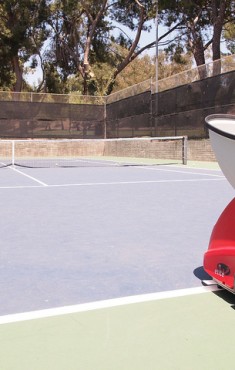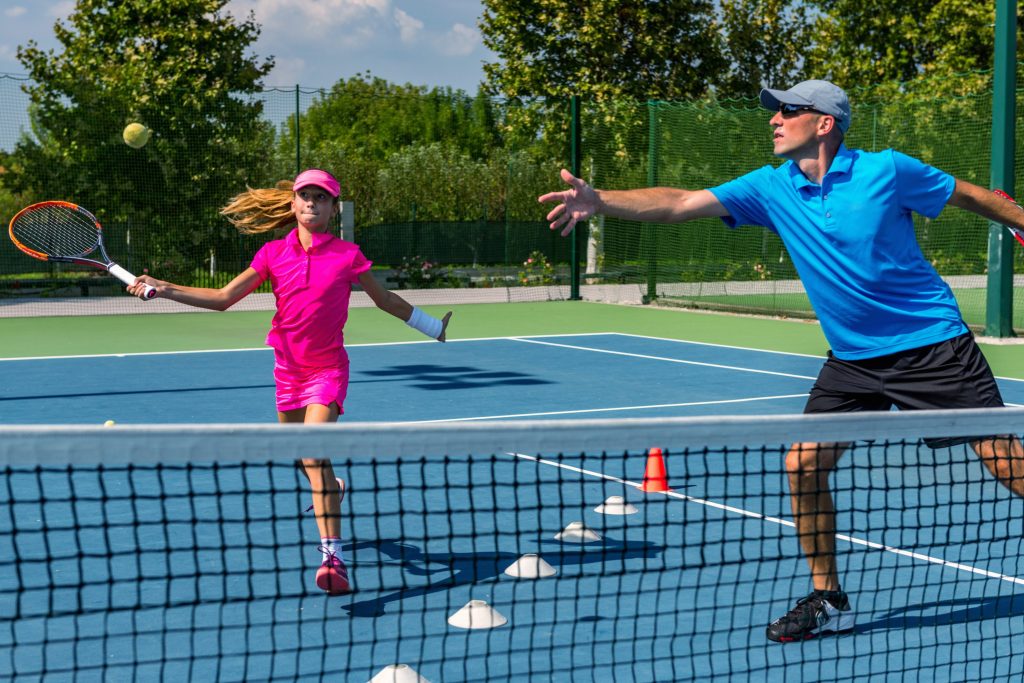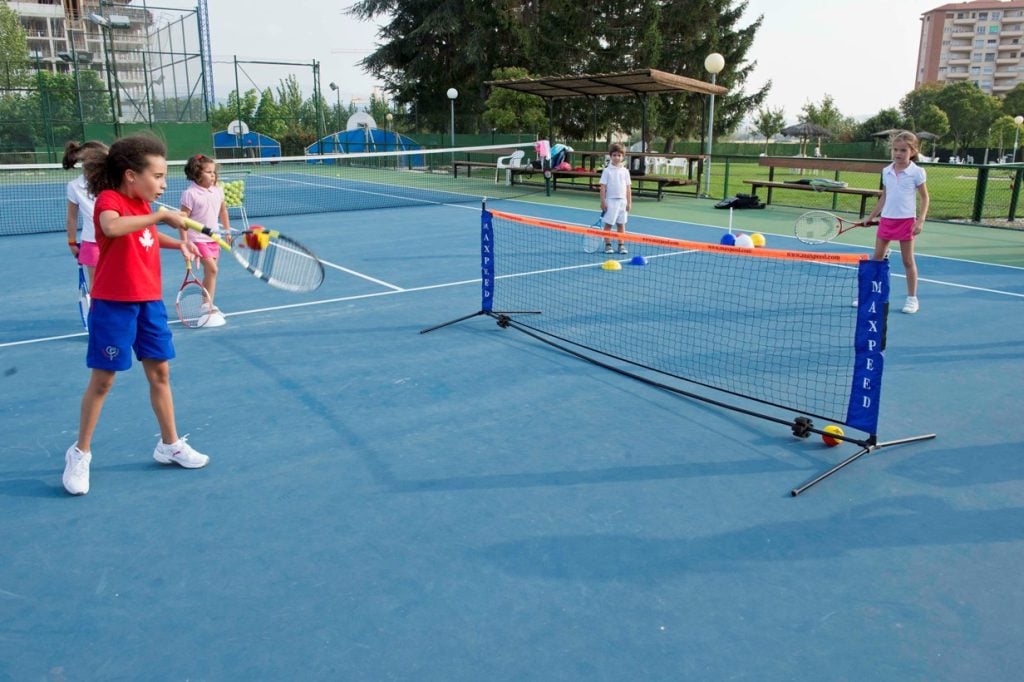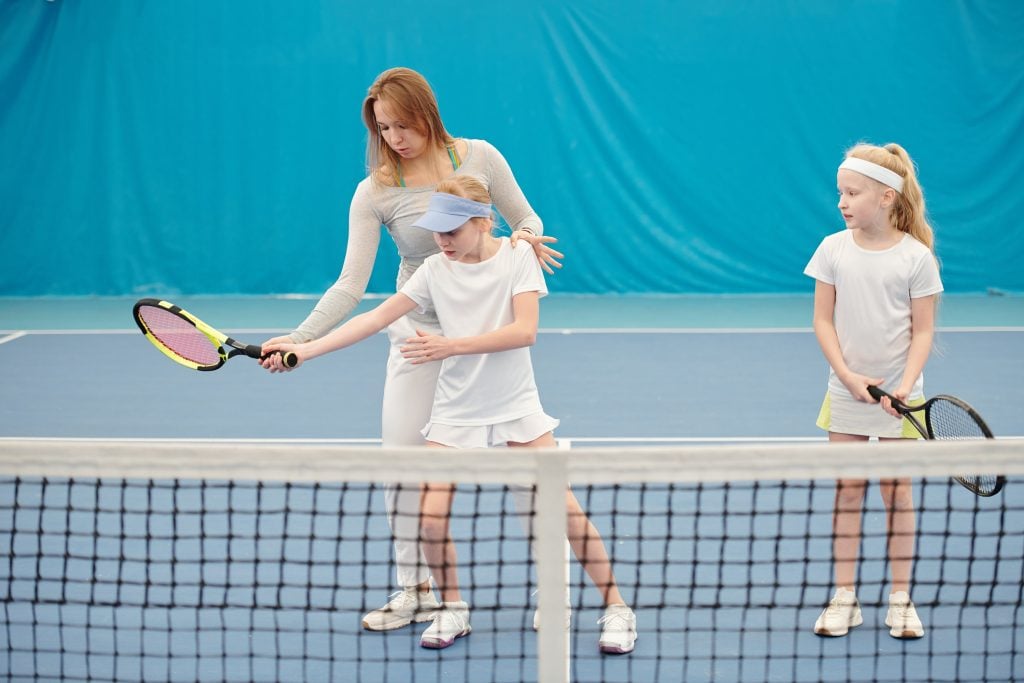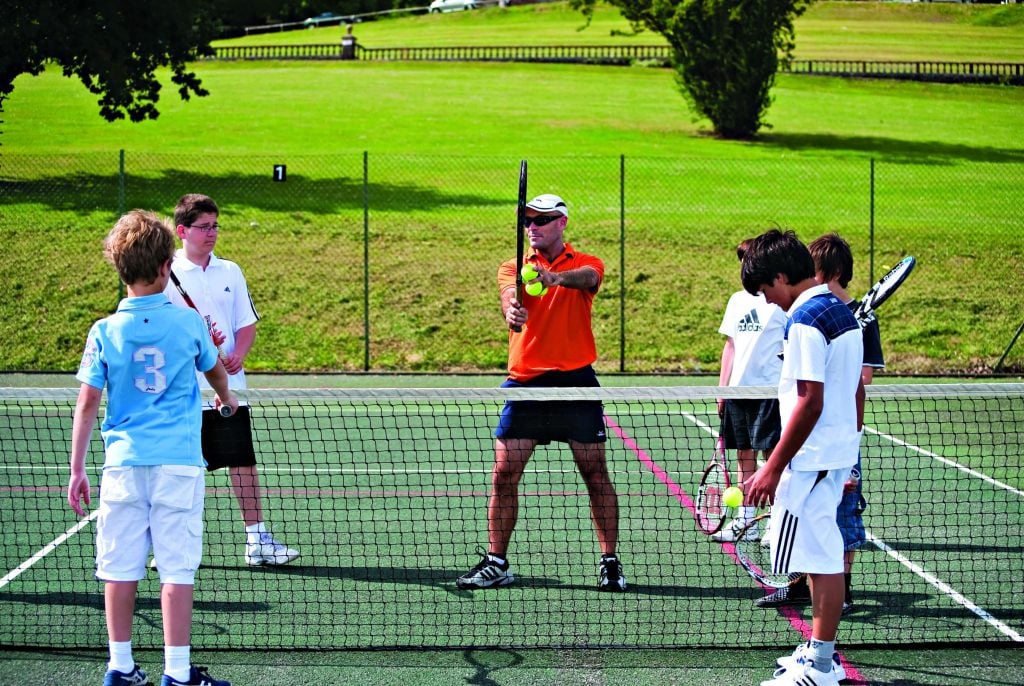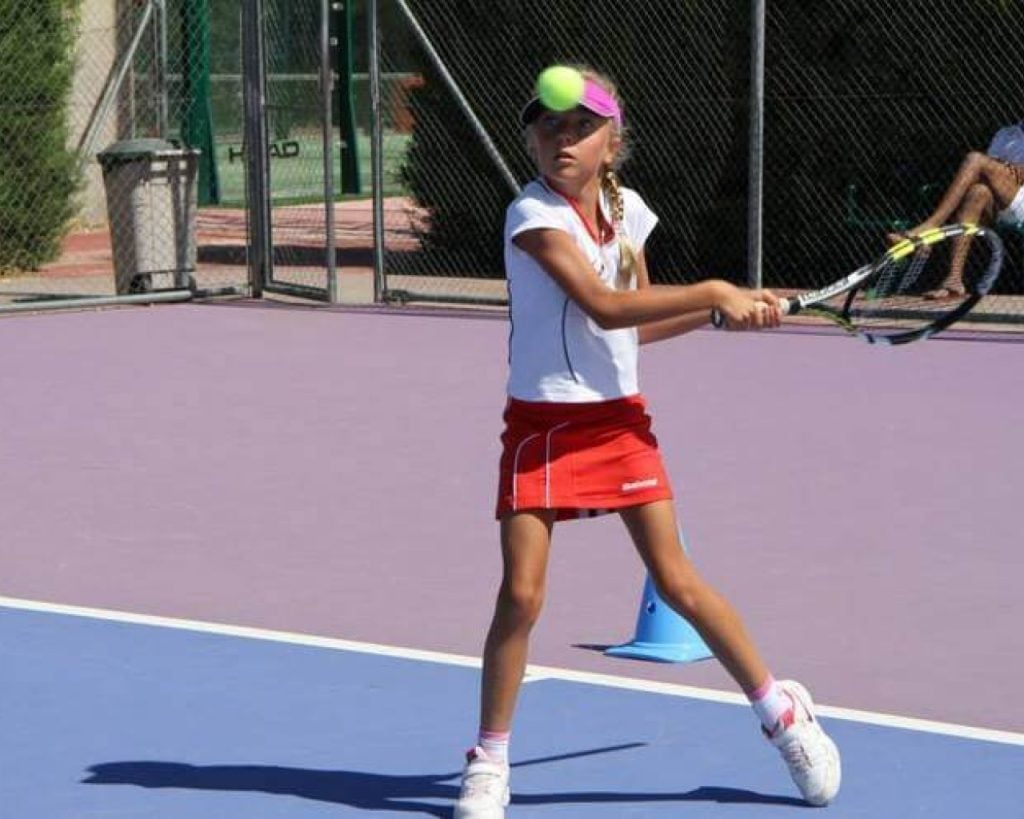TO BECOME A BETTER TENNIS PLAYER, YOU NEED TO GET THE BASICS RIGHT, AND THAT’S WHERE A TENNIS BALL MACHINE COULD COME TO YOUR AID.
If you are an aspiring young tennis player, you need to learn how to strike the ball well on a consistent basis. And if you want to compete at a high level, it is also vital that you work to improve your accuracy and power. All of this requires a serious amount of repetitive practice.
Of course, if you are serious about your game, you will need some kind of professional coaching and younger players may want to spend time at a tennis academy or tennis camp where they can enjoy an immersive coaching experience combined with educational studies.
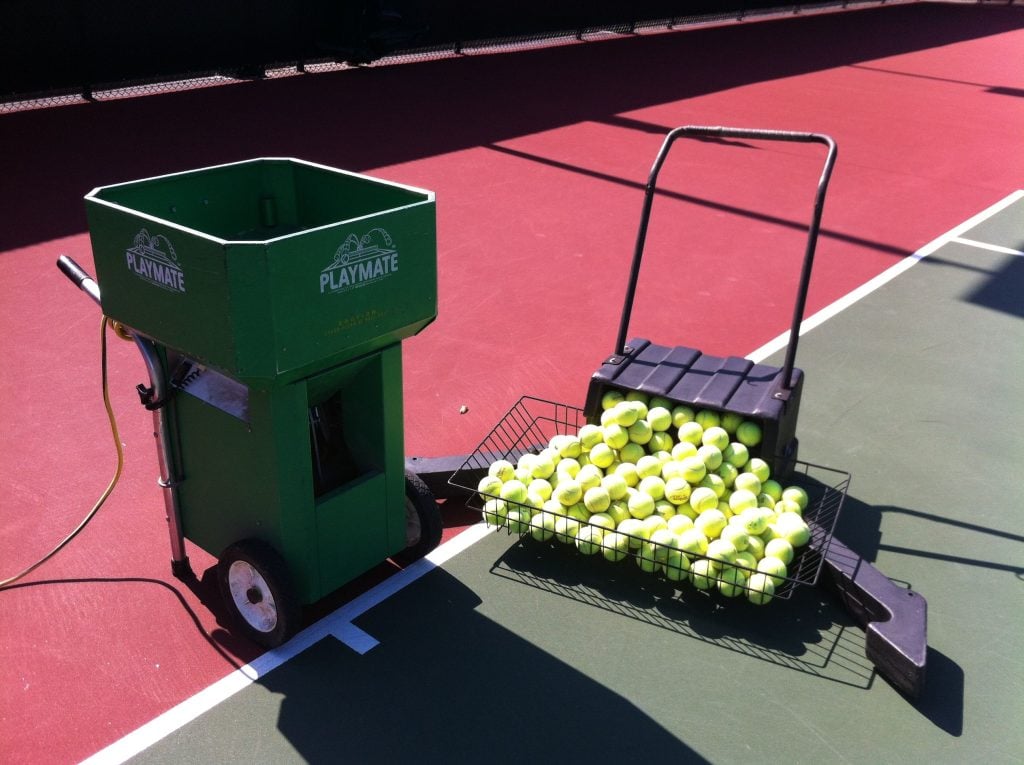
Photo: www.second-serve.com
In an ideal world, you would with work with a professional coach and a machine, with the coach studying and offering advice on stroke technique while the machine does the hard work of delivering the balls. However, your coach may not always be available and during your professional training sessions, you might want to spend the time fine-tuning the more technical and tactical aspects of your game.
For this reason, a tennis ball launcher represents a solid investment for anyone looking to improve their game, whether they have access to professional coaching or not. With a tennis ball machine you can take to the courts and practice your strokes anytime you feel like and for a long as you like.
The history of the tennis ball machine
The French tennis star Rene LaCoste was more than just a master on the court. Away from the tennis circuit, the man known as “The Crocodile” was a shrewd business man and a pioneer in new tennis technology. In the 1920s, he patented a hand-cranked tennis ball launcher in association with sports company Dunlop. The machine was operated by a partner at the other end of the court and allowed him to perform countless stroke repetitions.
LaCoste also produced the first tubular steel tennis racket and of course, he founded the famous sporting brand that still bears his name today.
By the 1950s, electrically-powered machines had started to appear at tennis clubs but were not widely available to the general public. These machines used a high tension spring to launch a bar fitted with a striking head at the ball. The type of striking head that was fitted determined the trajectory of the ball that was launched. The speed of the machine could also be varied to deliver more or less balls per minute.
In the video below, we can see such a machine being used at the Chingford tennis club in Essex, England.
In 1968, Robert H. McClure, a sales executive and keen tennis player, built a new tennis ball throwing machine. At the time, McClure was 75 years of age but the machine was a success and sparked the formation of the Prince Manufacturing Company. He eventually retired in 1974 but the company continues to produce tennis equipment to this day.
The first machine created by McClure and business partner Jerry Sweeton was known as the “Little Prince” and used a vacuum cleaner motor to build air pressure and fire balls from a tube.
The Prince machines were the first tennis ball launchers available on a large-scale commercial basis and sparked a revolution in the tennis machine industry.
These pneumatic machines remained the technology of choice for many years until counter-rotating wheel systems appeared on the market. Today, battery-operated portable machines are the favoured option for most budding players who do not have access to their own court or electricity supply.
There are many companies competing in the modern marketplace including top brands such as Spinfire and Lobster. Here is a modern Lobster machine in action:
The cost of hiring or buying a tennis machine
Many tennis training centres are equipped with tennis ball machines which can be hired at a small cost on an hourly or daily basis. So even if you do not have your own court or machine, you can still take advantage of the training benefits provided by such tennis ball launching devices.
These machines allow you to adjust the speed and regularity at which the balls are delivered so you can tailor your training regimes to suit your needs. There are even machines available that can serve like a professional to help you improve your return like this one from Ace Attack:
The price of hiring such a machine will depend much on your location and the type of club or sports centre that you frequent but a typical price would be around $15 (£12/€13) per hour. If you want to rent for longer, you can usually get a deal for half or whole day rentals.
However, if you are thinking about hiring one on a regular basis, it might make more sense to buy your own machine. Machine start from as little as $700 (£550/€600) and can cost up to $3500 (£2600/€3000).
Main benefits of a tennis ball machine
Firstly, a tennis ball machines can help you to develop a consistent stroke by delivering the ball exactly the same way each time. This allows you to perfect your technique until it becomes second nature. Once you have learned to strike the ball cleanly at different speeds on a regular basis, other areas of your game will also improve.
Once your stroke feels good, you can set your machine to deliver balls at different speeds, heights, directions and intervals to really boost your full repertoire of shots. You can even set the machine to deliver balls with topspin or backspin.
Hiring a coach to perform this type of repetitive exercise can be very expensive and even the best coach cannot hit the ball with such precision. What’s more, you can practice when you want, for as long as you want and at a tempo that suits you.
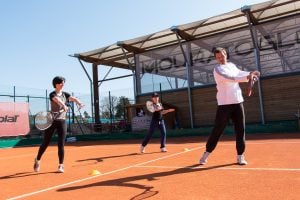
So, whether you want to improve your forehand, backhand, lob or overhead smash, a tennis ball launcher gives you the flexibility you need to put in those extra hours outside of your standard coaching regime.
Tennis ball machine features
The features that will be available on your machine will depend on how much you spend. Most entry-level machines still use a compressed air system and can be slightly noisier than their rotating wheel counterparts. They are also slightly less accurate when using different types of balls. However, they put less wear on the ball making them last longer.
The counter-rotating wheel machines are more accurate and much quieter overall but they are more expensive and will wear out your tennis balls more quickly.
Some machines offer an option to add topspin and backspin to the deliveries. This is a useful feature to have but if you are on a limited budget this might not be available on machines in the lower price range.
Nearly all machine now offer different oscillations, allowing you to receive balls from different heights and directions. This can get you moving around the court and dealing with different types of shots without having to adjust the machine. Some machines can even feign shots by moving from side to side causing you to move in one direction before the ball is fired in another.
Other adjustable options include the speed and interval at which each ball is delivered. And in recent years, companies have started to offer remote control devices so that players can make adjustments to the machine without having to move from their practice position.
Here is a great video that shows the main features of a standard specification machine:
Choosing the right machine
Players who will have to transport their machine to multiple locations should choose a smaller portable option. Some of the larger machines will not fit in a car and can be quite heavy to lift. In this situation, a battery-powered machine is also recommended as it is not always possible to guarantee an electricity supply will be available at every location. Battery machines can last anywhere between two and 12 hours depending on the machine chosen.
For those who have access to their own court or have suitable transportation, a larger high-powered electric machine may be more suitable. Your tennis club may even allow you to store the machine on-site and some even have AC power supplies available near the courts especially for machines use.
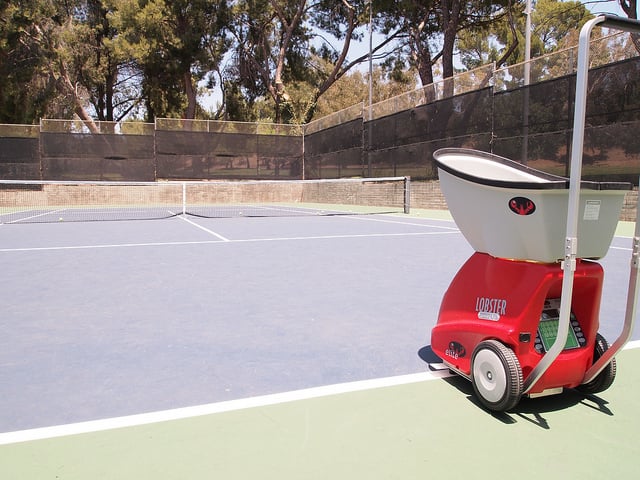
Typically, tennis ball machines can hold between 50 and 300 balls, so those who practice without a partner or coach present may prefer to invest in a machine with a larger capacity to reduce the time needed to reload.
Remember, a tennis machine cannot give you the same level of tuition that you would receive from a professional coach. Budding young players need proper coaching, either on a regular basis or in an intensive environment such as a camp or academy. However, such devices can help you to improve your game massively and most serious players now use tennis machine as part of their regular training regime.
We hope you enjoyed our article on tennis ball machines. Remember, if you want your child to receive dedicated tennis training this summer from expert coaches, we can help.
Our team of advisors are always on hand to answer your questions and offer honest, expert advice.
Just give us a call today on (+44) 203 769 94 43 or (+34) 902 750 359. You can also contact us via email: info@ertheo.com.

